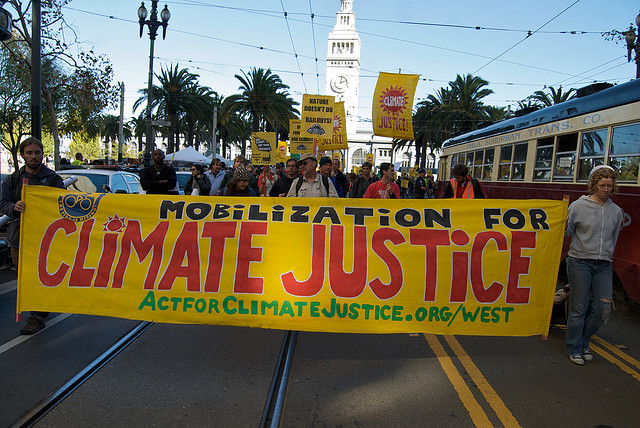In recent years, the debate around universal basic income has gained much popularity and coverage. The many successful models of basic income, both universal and targeted such as Alaska, Iran and Brazil (Bolsa ) along with an active movement in many European countries to adopt pilot experiments, made researchers and social workers in India enthusiastic to try out similar studies in the country to evaluate the viability of such an unconditional cash transfer to ensure social security to its vulnerable citizens. Even mainstream economists, such as the distinguished Pranab Bardhan stated the following during an interview when he was asked whether he favoured some sort of universal basic income for India:
‘This (universal basic income) is even more important in India because we mess up on distinguishing the poor from others. Below poverty line (BPL) lists in most states exclude many poor people while many well-off families manage to bribe their way in. .... .But if you move towards universal transfers, you can avoid the inefficiency and corruption in classifications such as BPL’
From a degrowth perspective, a universal basic income makes perfect sense. The capitalist idea of ‘trickle-down’ effect has been disproven time and again. If we are to seriously contemplate living sustainably on this planet, the only way is to find alternatives to the growth mania. And one of the major criticisms one faces when explaining the need to degrow, in India in particular and the global South in general, is how would you help those living in abject poverty and destitution. A universal basic income provides a strong answer to that. In a country where close to 270 million people live below the poverty line, out of which more than 216 million people are in the rural areas, it becomes very important to ensure that each and every possible step is taken to reduce poverty and improve the lives of the people.
There are, however, two strong criticisms of this system of basic income. Firstly, critics state that this system would lead to a reduction in labour, as more people would be motivated to be ‘free loaders’, and secondly this system isn’t financially viable.
In the Indian context, the criticism that basic income leads to free-loader problem has been proved to be wrong by extensive evaluation of the pilot experiments conducted in rural India.
In 2011, a pilot project called the ‘Madhya Pradesh Unconditional Cash Transfers Project (MPUCT)’ was launched in rural Madhya Pradesh through Self Employed Women’s Association (SEWA), in collaboration with UNICEF. Under this project, for between 12 to 18 months, over 6,000 individuals received ‘basic income’. There were two pilot studies conducted under this project using the Randomized Control Methodology. In one study, 8 villages received the basic income, while 12 similar villages didn’t. In the other study one tribal village received the income while another tribal village was taken as control group. In the beginning, in the 8 villages, each adult received 200 rupees a month and each child got 100 rupees a month. After 12 months, the amounts were raised to 300 rupees and 150 rupees respectively. In the tribal village, the amounts were 300 rupees and 150 rupees for the entire period of 12 months.
The project evaluated the situation in the villages before, during and after receiving the basic income. This was done using multiple rounds of statistical surveys, and then by evaluating them against the villages in the control group that had not received the basic income transfer.
In total, the surveys covered over 15,000 individuals. In addition a hundred in-depth case studies were carried out with recipients over the period of the experiment as were community level surveys, interviews with key respondents, along with a tracking of children’s weight for age (as a proxy for nutrition) and their attendance and performance in schools to assess if these outcomes were influenced by receipt of the basic income.
There were three main features of these grants: they were universal (as opposed to being provided to a targeted, generally economically backward group), they were unconditional (there was no imposition on what commodities or services the money could be spent), and they were individualistic (instead of providing the cash transfers at a household level). These were to ensure that there is no harassment or corruption which often follows conditional cash transfers, since one need to get verification of how the money is spent to receive further grants, along with ensuring financial inclusion of women, children and the elderly which might not have been possible if the grants were given at the household level.
The results of these pilots published in the book Basic Income: A Transformative Policy for India. (2014, London: Bloomsbury) showed many encouraging implications, and were a positive step in debunking the myths that basic cash transfers in rural India wouldn’t be helpful as either it would lead to a decrease in labour work or money would be wasted away in alcohol consumption and other trivial pursuits by the villagers.
A few of the staggering results, as mentioned by Guy Standing[1] are written below:
As far as the second criticism goes, according to Renana Jhabvala, who has long been associated with the Indian Basic Income Network, basic universal income is financially viable too. She states that currently the Government of India spends more than 7 lakh crores on subsidies and welfare schemes for the poor, with little to show for results. If, however, the same money were allocated to be used as universal basic income, every family in India would receive 2500 rupees each month. And if this were to be transferred to only the lowest 60% income level families, it would rise to 4000 per month. This would provide a majority of the poor population of our country to get out of the destitution resulting from social and economic vulnerabilities. In the current economic situation that India is, even a basic income of 1000 rupees would go a long way in providing the citizens with a life of dignity and freedom.
Thus, these experiments showed that a universal basic income would bring about essential and positive changes, and should be taken seriously by policy makers to be a viable way of attaining progressive social reforms in India. It would also be monumental in paving a way for degrowth thoughts and action in the country. Under the current political regime, where there is relaxation of environmental laws for mining projects, curbing of freedom of press and educational institutions and widespread rise in commodification, it is extremely essential to facilitate debates for alternatives to growth and reach at solutions though solidarity and collective action if we are to attain socio-ecological justice in the country.
[1] Standing, G., 2013. India's experiment in basic income grants. Global Dialogue, 3(5), pp.24-26.
We are starting 2020 full of enthusiasm for all that is to come! If you want to be involved in the degrowth movement you just need to roll up your sleeves because in this new year, there will be plenty to do. Here is a list of the activities that planned for 2020 so you can already mark them in your calendar. Crowdfunding During the first months of the year, we will be going through the fi...

Degrowth is usually translated into German as "Postwachstum" (post growth) or "Wachstumsrücknahme" (reversing growth), but it can also be translated as “ausgewachsen” (grown up). This captures two aspects: on the one hand the end of growth and on the other hand the entry into a stage of maturity, namely adulthood. Adults are expected to show increased maturity and responsibility for themselves ...

By Christiane Kliemann Shortly before the most crucial UN climate change conference after the failure of Copenhagen, it seems that the international climate-movement is finally getting its act together: resistance against fossil fuel extraction is gaining ground and a rising global movement is putting pressure on institutions to divest their money from fossil fuels to finance renewables instea...